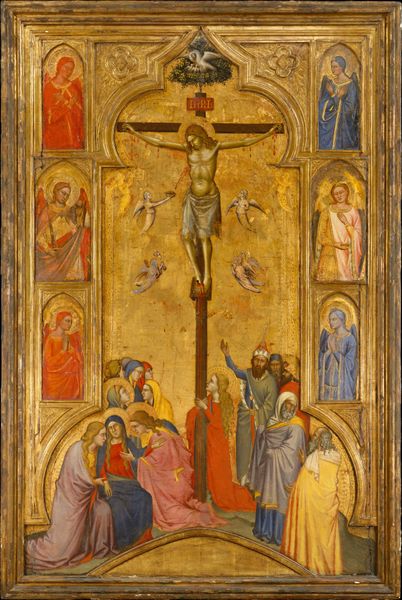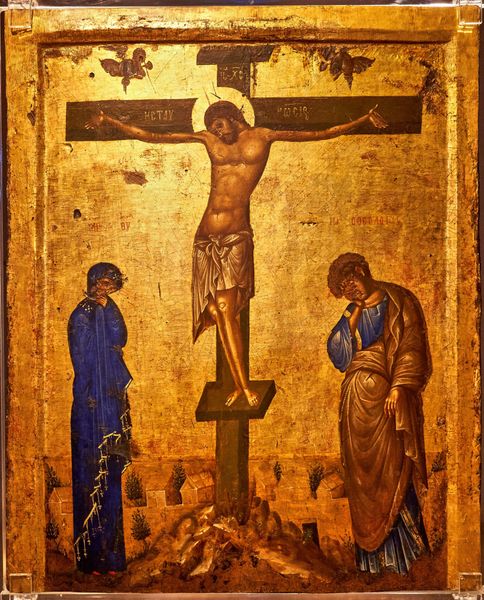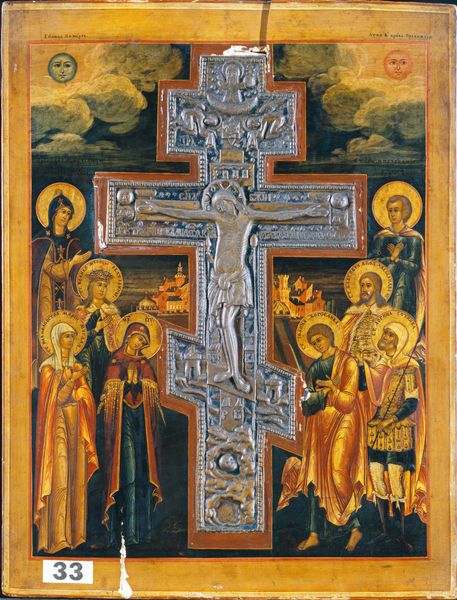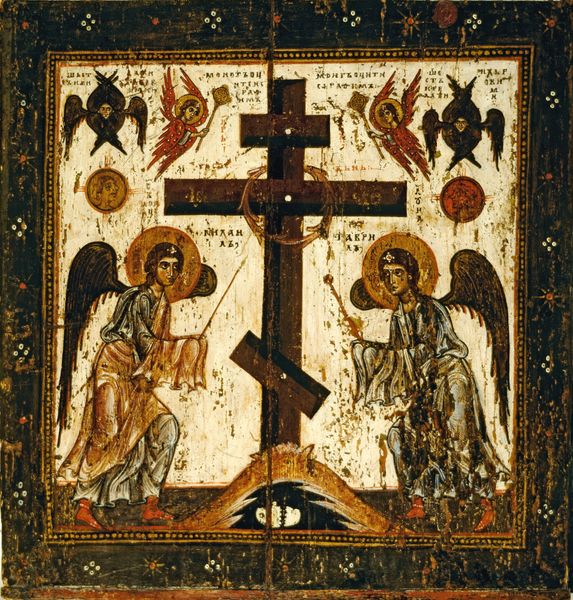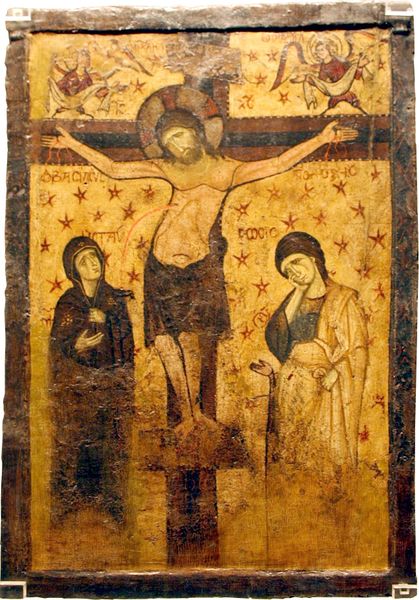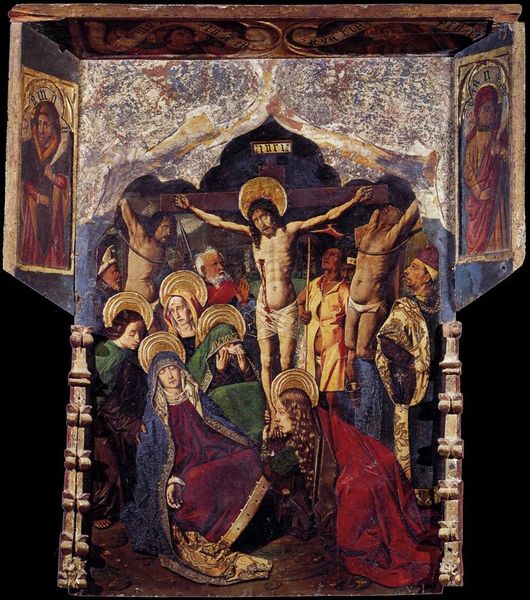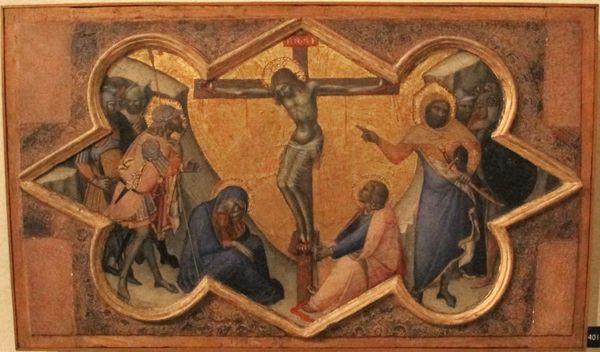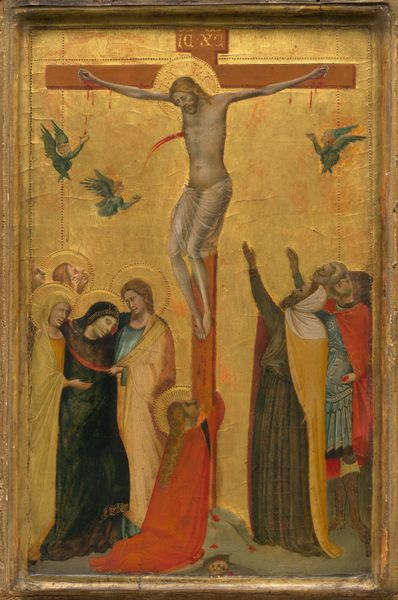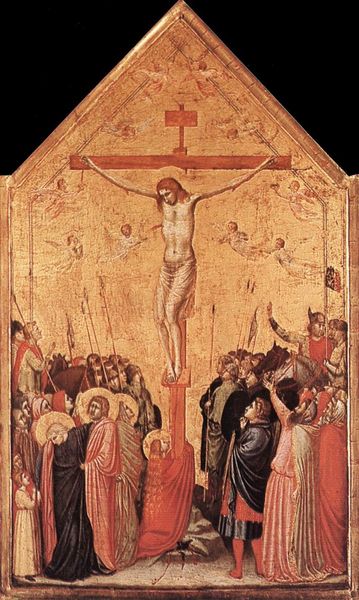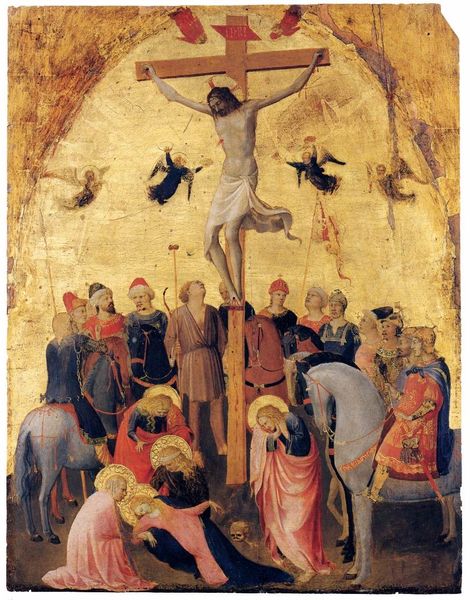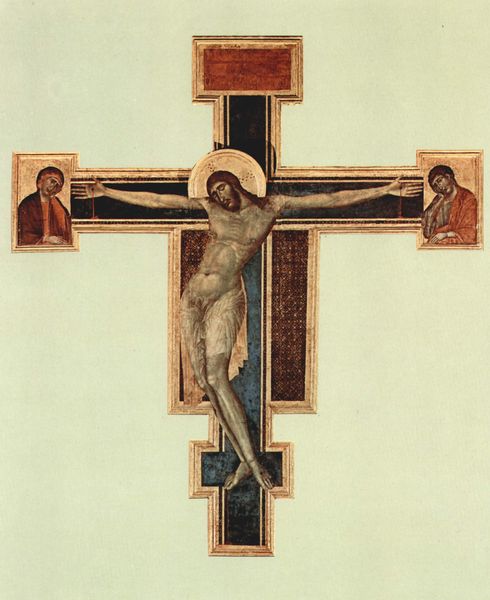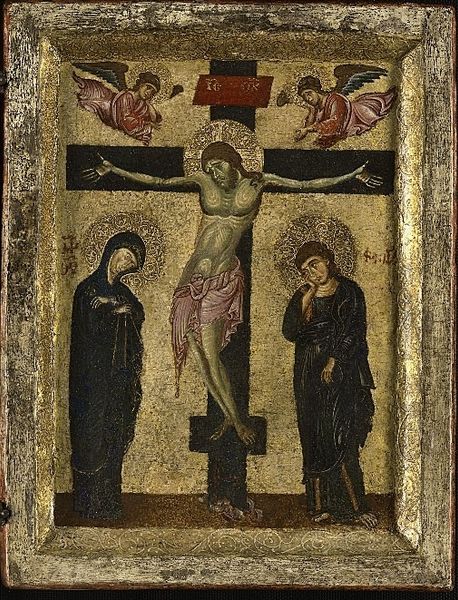
tempera, painting
#
byzantine-art
#
medieval
#
narrative-art
#
tempera
#
painting
#
sculpture
#
figuration
#
oil painting
#
history-painting
Copyright: Orthodox Icons,Fair Use
Editor: Here we have a Byzantine icon from around 1200, "Crucifixion," made with tempera. What immediately strikes me is the composition – the stark central figure contrasted with the surrounding figures and golden background. How would you interpret this work? Curator: Well, from a materialist perspective, I see a fascinating intersection of religious narrative and production. Consider the tempera itself – ground pigments, likely sourced locally, meticulously applied. This wasn't simply about representing a scene, it was about labour, material, and access within a specific social hierarchy in Egypt. Editor: So you’re thinking about the labor that went into making this object… Curator: Precisely. How the making informs our understanding. For instance, who commissioned this? Were they wealthy? The gold suggests so, pointing to a patron capable of commanding such resources. And think about the role this object would have played: was it meant for individual contemplation or communal veneration? Its presence at Saint Catherine's Monastery speaks to its connection to a community, but is that community just the monks themselves or a larger one, shaped through its circulation of similar icons? Editor: I see. It’s more than just the religious symbolism, it’s about the conditions of production, access, and use. What about the function of the icons for people who were maybe illiterate, to have visual access to Christian stories? Curator: Exactly! This extends beyond personal devotion; it shapes a collective identity through accessible imagery that reaffirms particular modes of religious production. We’re considering an economic and social role too: the dissemination of ideological material. And thinking of circulation -- I wonder how its existence here, in this location, shifts our interpretation, or whether our interpretations depend on access, authorship, trade… It never really ends, does it? Editor: Never. I see now, approaching it from a materialist viewpoint really unpacks a whole history that's embedded within this object. It is much more than it appears.
Comments
No comments
Be the first to comment and join the conversation on the ultimate creative platform.
